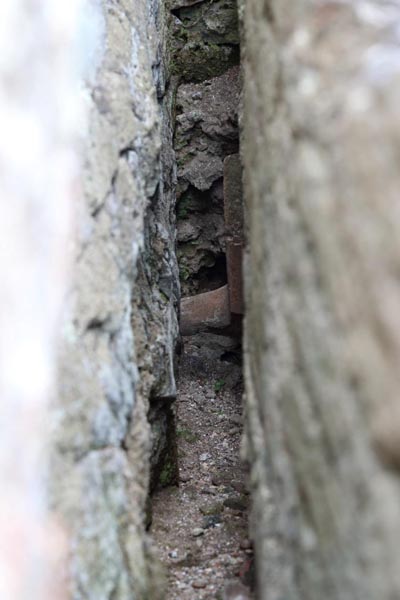The calidarium
The users of Roman baths always found three environments in the building, no matter how big or important it was: the frigidarium, the calidarium, the tepidarium.
The calidarium was a heated environment where the visitor sweated and could cool off using a specific water basin, before moving on to the other environments.
The room was heated through a cavity system: a second structural environment was built in the main one, and its floor was supported by small stone or brick pillars while the walls were separated using large tiles with holed appendixes at the ends to be fixed to the wall. The hot air produced by ovens circulated in this cavity.
The calidarium of Fordongianus (fig. 1) is not well preserved; however we can identify it because of a small tub (fig. 2) with cavity tiles at its sides; these were called tegulae mammatae or tegulae hamatae (fig. 3).



There is a niche in the wall next to the bath which probably held an ornamental statue, now lost (figs. 4-5).


Bibliography
- G. BACCO, P. B. SERRA, Forum Traiani: il complesso termale e l’indagine archeologica di scavo, in L’Africa Romana XII, Atti del Convegno di Studio 1996, pp. 1232.

 VR
VR